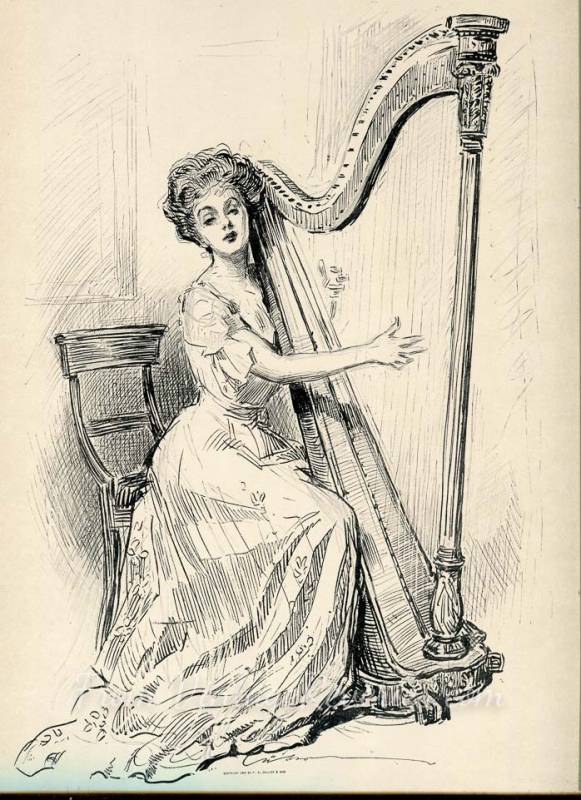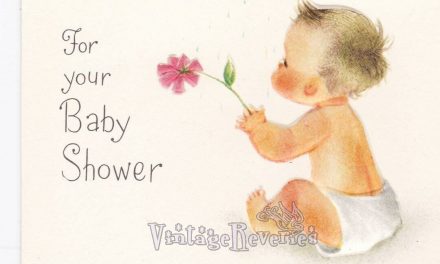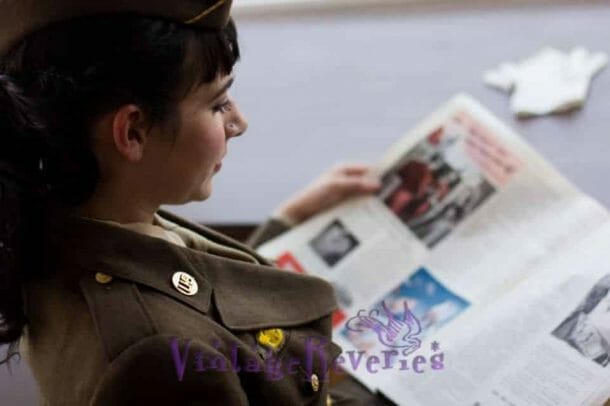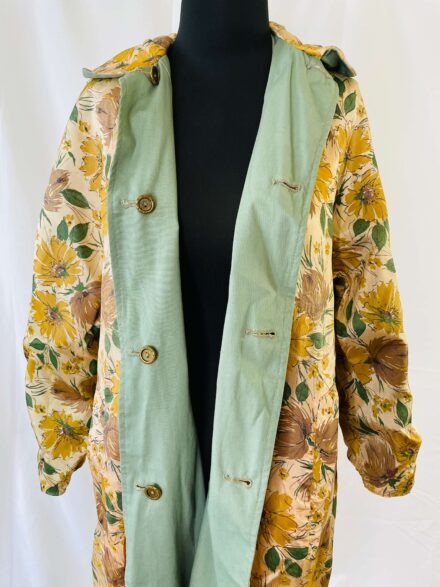
3 Musical Gibson Girl Sketches

Here are three exquisite sketches by renowned artist Charles Dana Gibson, showcasing his iconic “Gibson Girls” in musical elegance. Each sketch captures the poise and grace of these turn-of-the-century women as they engage with musical instruments, evoking a sense of refined culture and timeless beauty. These works, drawn during the height of the Gibson Girl phenomenon, remain a hallmark of Edwardian art and a celebration of feminine strength, sophistication, and charm. The Gibson Girl, hailed as the first American ideal of beauty, was groundbreaking for its time—symbolizing independence, intelligence, and social class at a pivotal moment in history.
These particular illustrations depict musically talented women in settings that combine artistry with allure, showcasing the cultural trends and societal ideals of the late 19th and early 20th centuries. The featured sketches are titled:
- “The Wearin’ of the Green” – A striking image of a woman dressed in flowing Edwardian attire, delicately playing a harp. The harp, an instrument deeply rooted in history and art, often symbolized elegance and a connection to classical culture. During this period, the harp also came to represent the genteel refinement valued by the emerging American upper class.
- “Then You’ll Remember Me” – This sketch presents a composed cellist in the midst of her performance, her attention focused intently on her music. The title, borrowed from the popular 19th-century ballad “Then You’ll Remember Me” by Michael Balfe, hints at the nostalgia and sentimentality often associated with Victorian and Edwardian music. The cello, an instrument capable of profound emotional depth, complements the delicate yet independent nature of the Gibson Girl archetype.
- “The Sweetest Story Ever Told” – The final illustration depicts a graceful violinist whose poised expression suggests her mastery of the art. The violin, a challenging and versatile instrument, mirrors the Gibson Girl’s complexity and the depth of her character. The title likely reflects a popular romantic song of the era, blending the themes of love, art, and storytelling into a scene of musical reverie.
Charles Dana Gibson, whose career spanned the late 19th and early 20th centuries, was celebrated for his portrayal of the modern woman. The “Gibson Girl,” his most famous creation, was more than just a face of beauty; she symbolized the new era of women stepping into roles of greater independence and influence. These women were smart, athletic, well-read, and socially confident—qualities that contrasted starkly with the previously restrictive standards that dominated earlier societal norms. Gibson’s work was both a reflection and a driver of this cultural shift, capturing the essence of a rapidly transforming world.
These sketches not only highlight Gibson’s exceptional artistry but also serve as windows into a historical period of profound change. The Gibson Girl was a perfect blend of the old world and the new—her Edwardian fashion and manners rooted in tradition, yet her spirit and ambitions pointing toward the future.
Beyond their artistic significance, pieces such as these provide us with an intimate glimpse into the aesthetic ideals and cultural aspirations of the Edwardian era. Whether showcasing their elegance or the broader societal change they represented, these musical Gibson Girl sketches remind us of the enduring power of art in capturing the spirit of an age.
The three prints, steeped in history and cultural significance, remain timeless treasures for art enthusiasts and historians alike:
- “The Wearin’ of the Green” – a woman playing a harp.
- “Then You’ll Remember Me” – a woman playing a cello.
- “The Sweetest Story Ever Told” – a woman playing a violin.
These sketches are as enchanting today as they were over a century ago, representing the harmonious blend of music, art, and a new era of feminine empowerment.



















You must be logged in to post a comment.